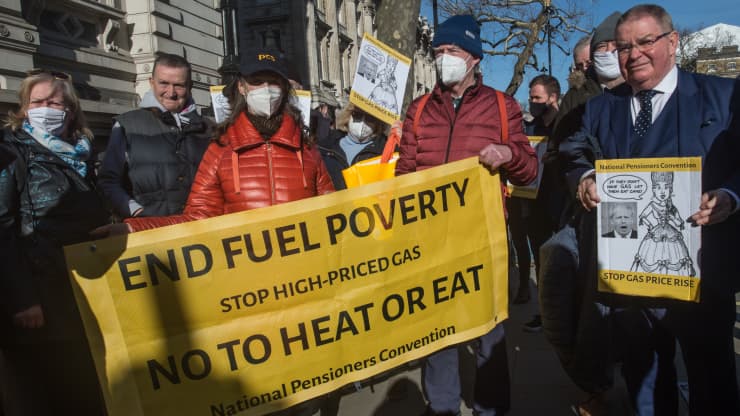According to the Washington Post,
“…the current Fed chair, Jerome H. Powell, has dismissed claims that the Fed’s money-printing is fueling today’s price spiral, emphasizing instead the disruptions associated with reopening the economy. Like his most recent predecessors, dating to Alan Greenspan, Powell says that financial innovations mean there no longer is a link between the amount of money circulating in the economy and rising prices.”
Really? The Fed now maintains there is no longer a link between the amount of money in circulation and rising prices. Then why are they poised to raise the target rate for federal funds and reduce the size of the Fed’s balance sheet in March? Both of those policy shifts will reduce the amount of money in circulation, thereby lowering effective demand ceteris paribus. That, after all, is the point.
The Fed is up to its old tricks, trying to change the subject so as not to be held accountable for the explosion in inflation that it sponsored. The Fed insists that it has the tools to deal with inflation should it become a problem. Well inflation has become a problem. The question is not whether the Fed has the tools to address the problem. The question is whether the Fed has the will to use the tools at its disposal.
Consider the history. For years, a decade actually, the Fed’s stated policy goal was to increase the inflation rate to 2%. This it failed to do. Between the years 2010 and 2020 the inflation rate averaged 1.73%, staying between a low of 0.7% and a high of 3%.
Then, during the first quarter of 2020, in response to the Covid-19 pandemic the Fed drove short term rates to zero, created credit facilities for entire swaths of the economy and expanded the assets on its balance sheet from about $4 trillion in January of 2020 to $8.8 trillion by the end of 2021. The broadly defined money supply rose 35% from March 2020 through December 2021. Unsurprisingly the inflation rate, which had been humming along at 1.4% in 2020, soared to 7% in 2021.
It is important to understand the implications of the Fed increasing its balance sheet. The Fed began buying Treasury and Mortgage Securities, thereby increasing the assets it holds. On the liability side the Fed increased its “liabilities” by creating the dollars it needed to buy the assets it added to its balance sheet. In effect it just printed the money, thereby increasing aggregate demand.
Another thing happened on the way to this explosion of money creation. The Fed took Congress at least partially off the hook. The Fed enabled the Congress to spend trillions of extra dollars without worrying about financing. By purchasing gargantuan quantities of Treasury securities, the Fed provided the necessary financing. In so doing it blurred the distinction between fiscal policy (taxes and spending) and monetary policy (interest rates and the money supply).
It is also notable that inflation rates are soaring around the major industrialized economies of the West, largely because they have adopted the same foolish policies. The ECB drove interest rates into negative territory, and UK rates were tamped down by the Bank of England. The inflation rate in the UK recently clocked in at 5.4% in December, the highest reading since March 1992. This Thursday’s Consumer Price Index (CPI) is expected to be somewhere between 7% and 7.3%.
The political backlash is building as a result. Real (inflation-adjusted) wages are falling in the U.S and the U.K. because although nominal wages are rising, they not keeping up with inflation. Energy bills are set to rise in the UK by 50%. They are also set to rise substantially on the continent. Gas prices in the U.S. have risen 40% since December 2020. Chalk rising energy costs up to a combination of bad monetary policy and green energy initiatives.

We should be absolutely clear why the inflation rate is soaring across the Western economies. Policy makers have systematically driven interest rates down to zero and expanded Central Bank balance sheets, thus increasing effective demand. At the same time they constrained supply with lock-downs, green energy policies, more income transfers, and expanded regulation. Constraining supply and pumping up demand produces higher prices. There isn’t any mystery about it.
Policy makers are already trying to pin the blame elsewhere. Such economic luminaries as Elizabeth Warren (D-MA) are already complaining about “corporate greed” as if human nature abruptly changed when progressives came to power. Andrew Bailey, Governor of the Bank of England, foolishly asked Britains not to ask for wage increases to offset inflation. As if workers, not policy makers, were the problem here. Meanwhile over in Brussels, at its last meeting the ECB declined to raise its policy rate despite exploding inflation on the continent. And of course, progressives in the U.S., always searching for bad ideas to implement are hinting wage and price controls.
The fact is that policy makers in the leading Western economies created the financial mess we are in by spending too freely, suppressing interest rates, and piling on more and more regulations. We have seen this movie before, and it doesn’t end well. To put the economy on track for long term sustainable growth it is going to take significantly higher interest rates, reduced government spending and scaling back the regulatory burden of the nanny state. Which is to say, a complete and utter rejection of the progressive politics of Command-and-Control.
JFB
